

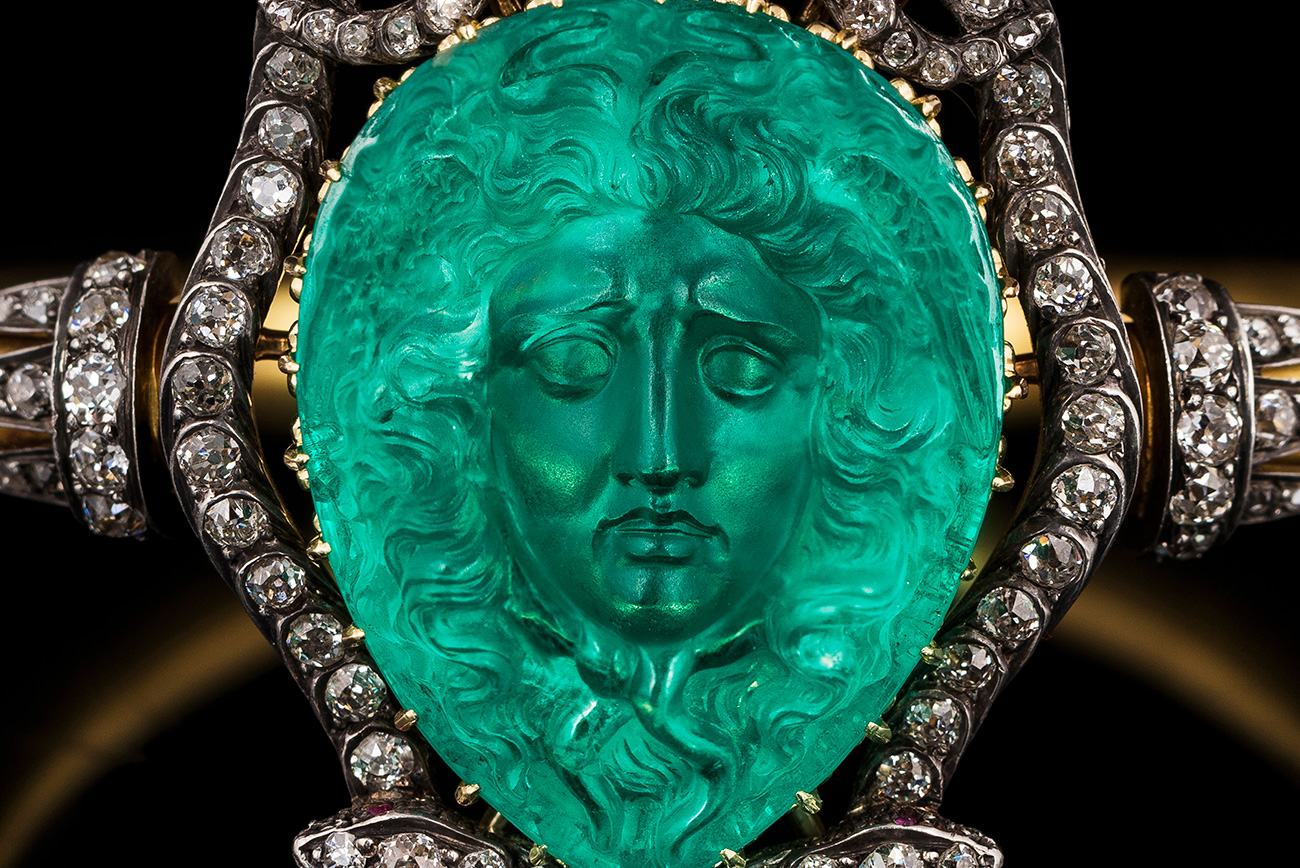
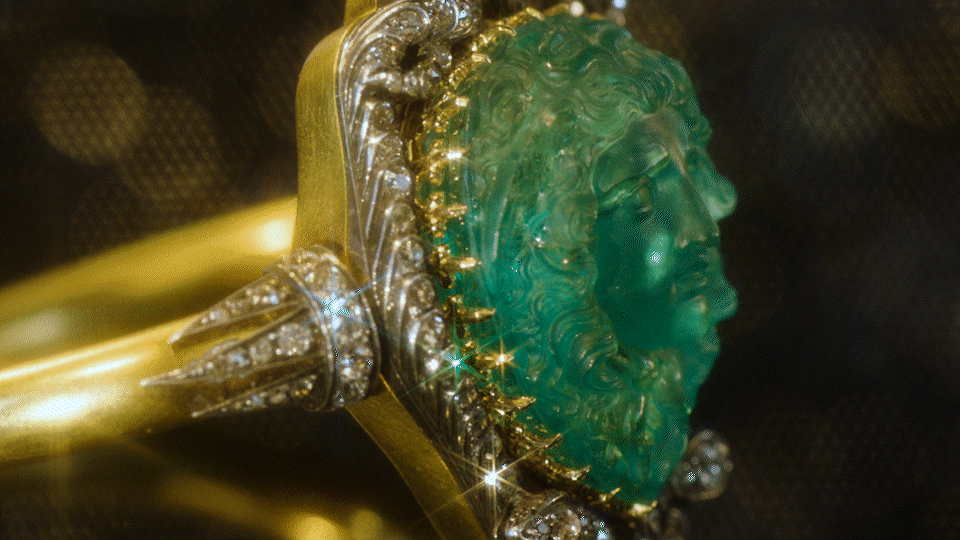
The bracelet is in gold and features a 65-carat Colombian emerald carved to depict the face of Medusa from Greek mythology. This emerald is the pinnacle of jewelry art and has been described as the "Mona Lisa of gems".
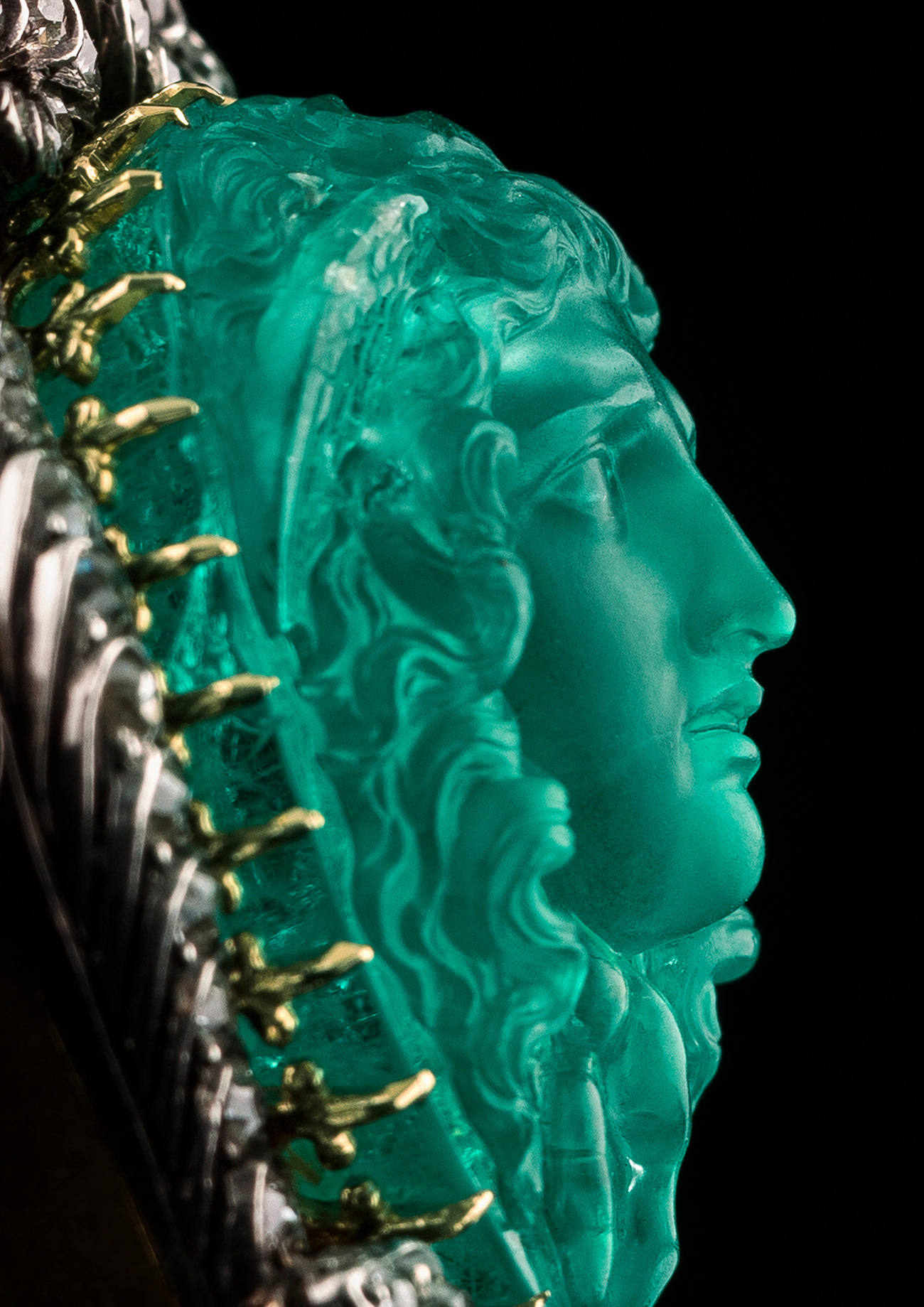
Medusa is a monster in Greek mythology, whose image and story have been interpreted differently by successive authors. The earliest account of Medusa is found in the 8th century BC in Theogony, generally attributed to the ancient Greek poet Hesiod. In Theogony, Medusa and her two sisters are referred to as the Gorgons. Unlike her two immortal sisters, however, Medusa had mortal flesh and was later beheaded by the hero Perseus.
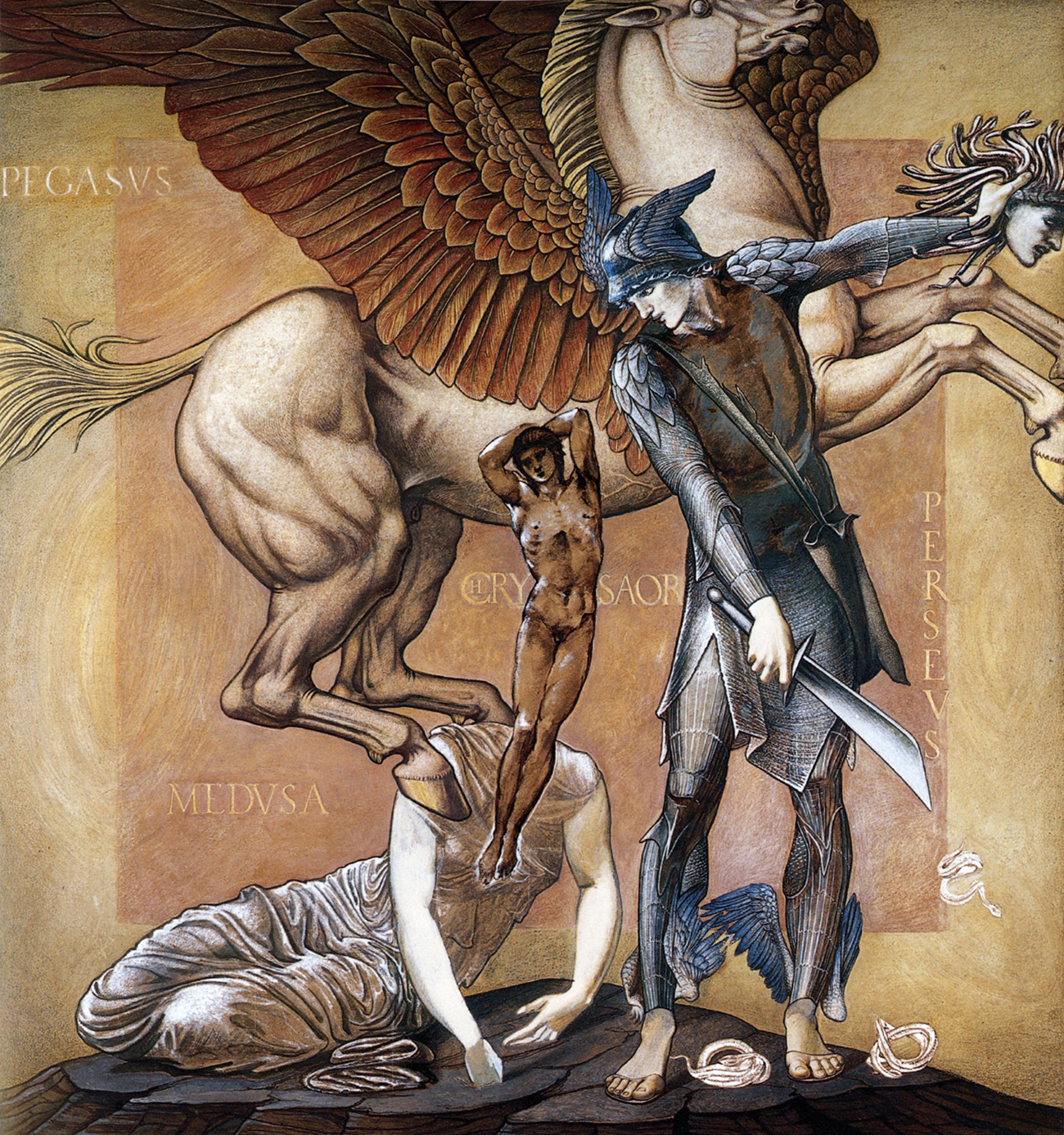
Edward Burne-Jones, The Perseus Series: The Death of Medusa I, 1882
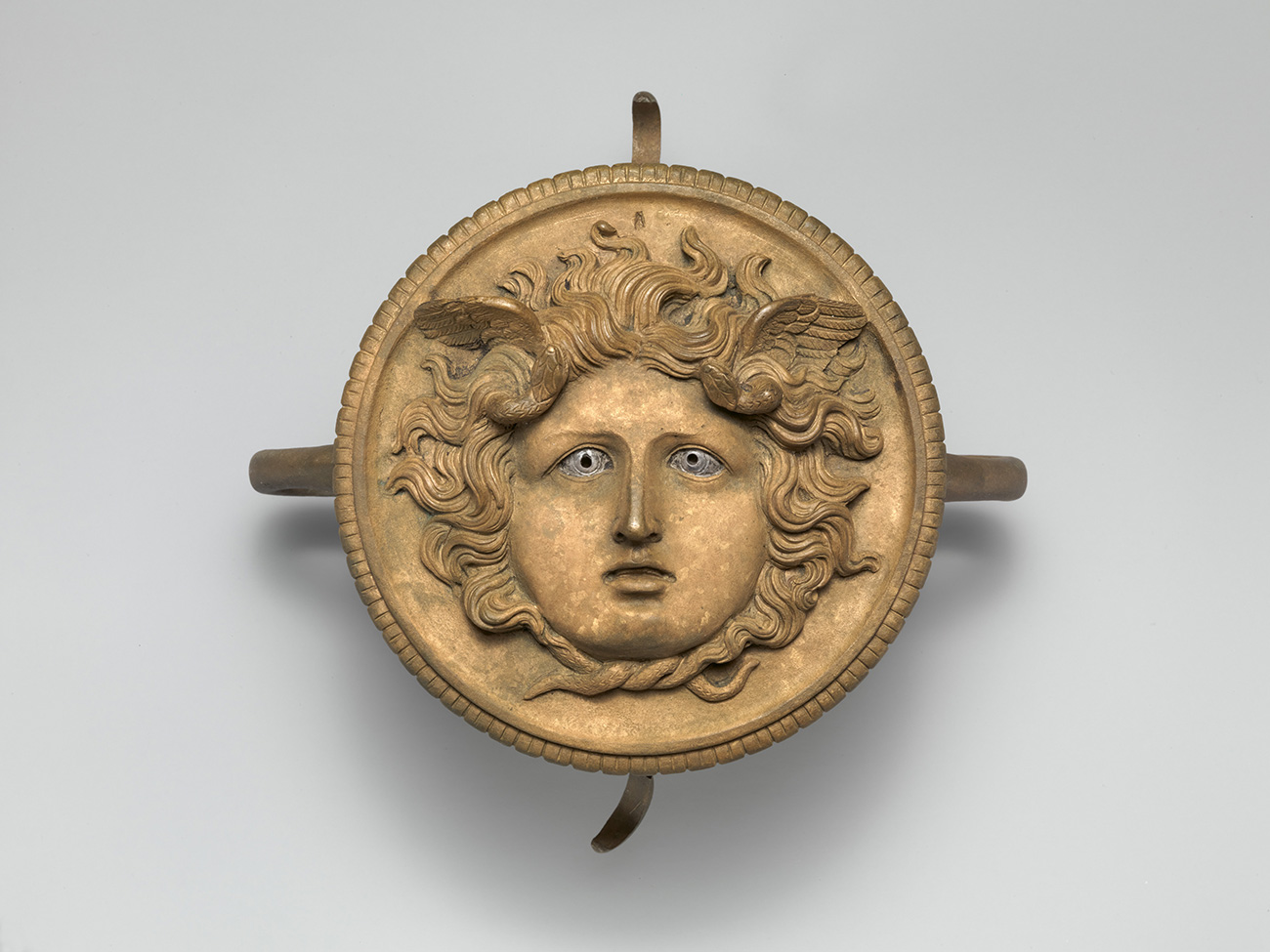
Roman chariot axle with Medusa's head carved on top, 1st-2nd century
As one of the most iconic symbols of Greek mythology, Medusa became a muse for artists, and her iconography evolved over a long period as history progressed. In later popular belief, Medusa had two main characteristics: firstly, she had a head full of snakes for hair; secondly, she possessed the magical power of petrifaction, which instantly turns any person or animal into stone upon gazing at her. This bracelet depicts Medusa's head with her eyes wide open, brow furrowed, and serpentine hair whipping about strikingly. A small pair of wings are carved on the top of her head, echoing the description of Medusa as a "winged" monster in Prometheus Bound.